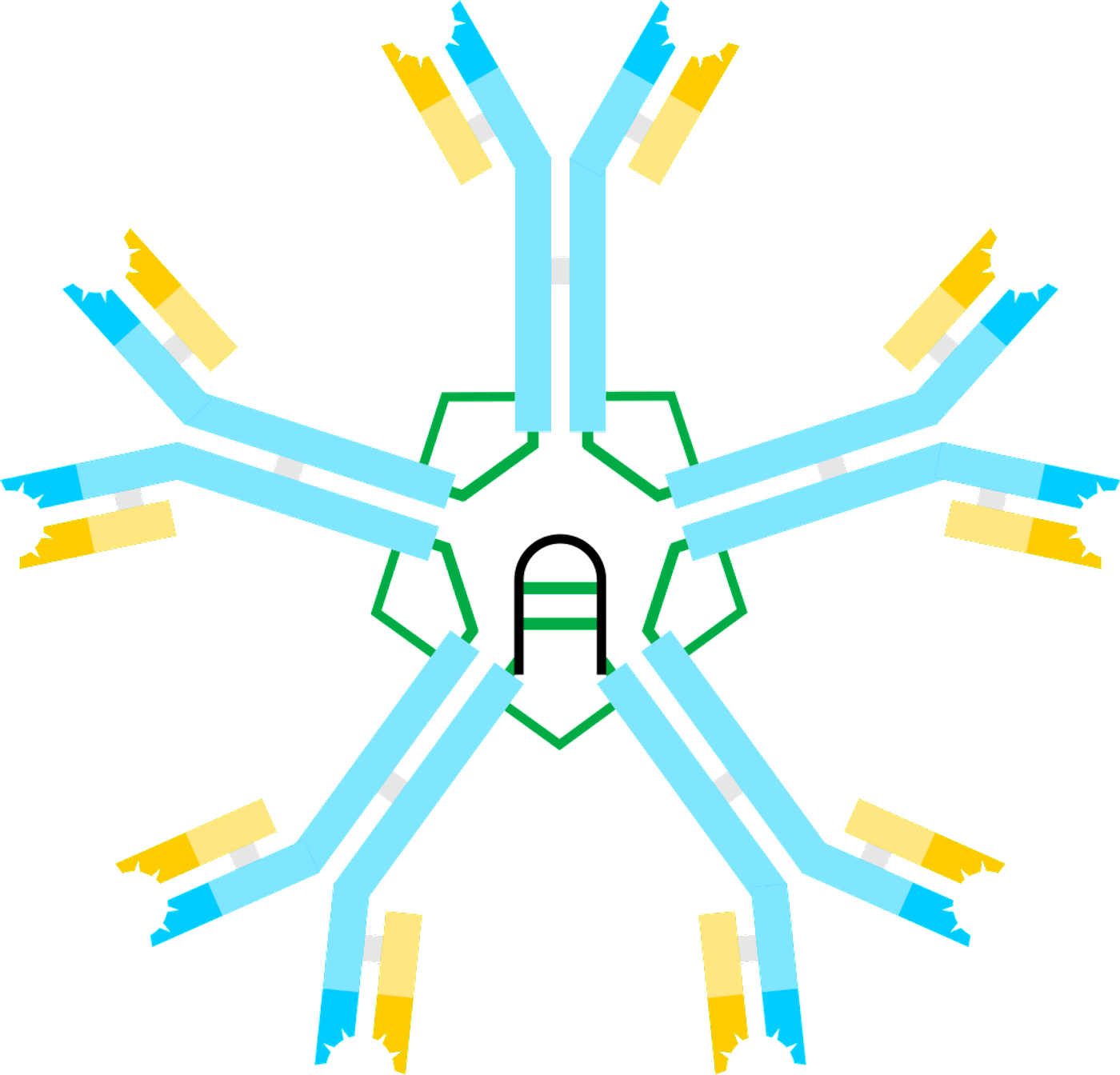IgM Antibody Protects against HIV-1 Infection
An estimated 1.8 million individuals worldwide became newly infected with human immunodeficiency virus (HIV) in 2017, including 160,000 children under the age of 15. Currently, no cure exists for HIV, but antiretroviral therapy (ART) can slow the progression of HIV to a near halt. A group at Texas Biomedical Research Institute have identified a class of antibody that may be a new defense against HIV-1 that was previously unstudied.
HIV infects cells of the immune system, destroying or impairing their function, resulting in deterioration of the immune system. When the immune system becomes weakened enough, it can no longer fight off infections, leading to potentially deadly opportunistic infections. HIV is transmitted through unprotected sexual intercourse, oral sex, and contact with contaminated blood by sharing needles or blood transfusions. Signs of HIV can take 5-10 years to appear when untreated, but treatment with ART can slow the disease progression by preventing the virus from replicating. ART decrease the amount of virus in an infected individuals’ blood, also known as the ‘viral load.’
Researchers at the Texas Biomedical Research Institute wanted to investigate the role of antibody IgM (Immunoglobulin M) in preventing HIV acquisition in vivo. IgM is mainly found in the blood and lymph fluid and is the first antibody to be made by the body to fight a new infection. Previously, scientists believed that the protective effect of IgM was too short-lived to be utilized as a protective agent against invading pathogens such as HIV, causing it to be understudied or forgotten in most research. Of all HIV cases worldwide, 90% of new cases occur through exposure in mucosal cavities like the lining of the vagina or rectum so IgM would be a line of defense in these scenarios. The study utilized recombinant polymeric monoclonal IgM given to rhesus monkeys, 30 minutes later they exposed the monkeys to simian-human immunodeficiency virus (SHIV), and then monitored them for 82 days. Of the six animals treated four were adequately protected against the virus by this passive immunization (introduction of pre-formed antibodies).
How does the IgM antibody allow for this protection? The IgM antibodies have a high affinity for their targets and will “grab” them very quickly. The IgM clumps up the virus, the larger clump is unable to cross the mucosal barrier and prevents spread of the virus to the rest of the body. Dr. Ruprecht, Director of Texas Biomed’s AIDS Research Program, said: "Our study reveals for the first time the protective potential of mucosal anti-HIV-1 IgM. IgM has a five-times higher ability to bind to virus particles compared to the standard antibody form called IgG. It basically opens up a new area of research. IgM can do more than it has been given credit.” Dr. Ruprecht has set off a wave in evaluating the activity of IgM antibodies in neutralizing HIV-1, which could work alone or in combination as a prevention and treatment method.
To read this study click here. To learn more about the history and challenges of developing an HIV cure watch the video below!









